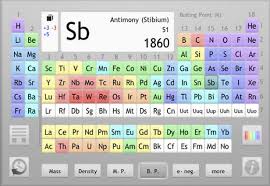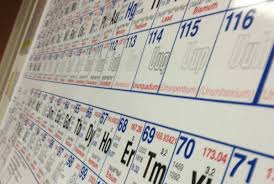Overview
Over the centuries, the number of elements has changed as new elements have been discovered. Some unstable, heavy elements have only been synthesized in atomic laboratories, so very little is known about them.
The Number of Elements Changes
The chemist Lavoisier listed 23 elements in 1789. Mendeleev arranged 63 elements in the first periodic table in 1869. In the 1930s, 93 elements were listed. In the 1960s, over 100 elements were listed, but not all of them had been isolated. The 2014 most recent version of the periodic table has 118 elements, but not all of them have been confirmed.
Gaps in the Periodic Table
The periodic theory of the elements has been used to predict several gaps, to be filled in with later discoveries. For example, the Russian chemist Mendeleev predicted 8 elements that would have specific properties, which were later synthesized. The periodic table was modified to allow for the noble gases. In the 1940’s, physicist Glenn Seaborg theorized that elements should be grouped in a different transition series, and elements are synthesized to fill in those gaps. Many of those elements are radioactive, and have short half-lives.
The Lanthanide and Actinide Series
The periodic table of the elements is arranged in 18 groups of elements with similar properties. Group 1 elements are the most reactive, and Group 18 elements, called the noble gases, are the least reactive. Most of the elements are metals. Many periodic tables show a huge jump from Element 57 (La) to Element 72 (Hf), and another huge jump in the row below it, from Element 89 (Ac) to Element 104. The first jump is called the Lanthanide series, and the second jump is called the Actinide series. In many periodic tables, those series are shown right below the main periodic table. They have similar properties, (even the ones that are on the verge of being discovered), as rare-earth elements, sometimes radioactive. Some of the elements with higher atomic numbers than uranium (U) have only been observed in the laboratory.
The Three-Letter Elements
Most elements in the periodic table have one or two-letter abbreviations, even those radioactive elements like Fermium (Fm)) and Lawrencium (Lr). Those abbreviations mean that the element has been accepted by the International Union of Pure and Applied Chemistry (IUPAC). Elements that have a three-letter designation (Un* or Uu*) are those elements that are unconfirmed or theoretical. Element 104 is called Unq in earlier periodic tables and Rf (Rutherfordium) in others. It has a half-life of 1.3 hours. Element 116 is called Uuh in earlier periodic tables, and was confirmed as Lv (Livermorium) in 2012. Its half-life is measured in milliseconds.
Interested in chemistry tutoring services? Learn more about how we are assisting thousands of students each academic year.
SchoolTutoring Academy is the premier educational services company for K-12 and college students. We offer tutoring programs for students in K-12, AP classes, and college. To learn more about how we help parents and students in Fredericton, NB, Canada: visit Tutoring in Fredericton, NB, Canada




